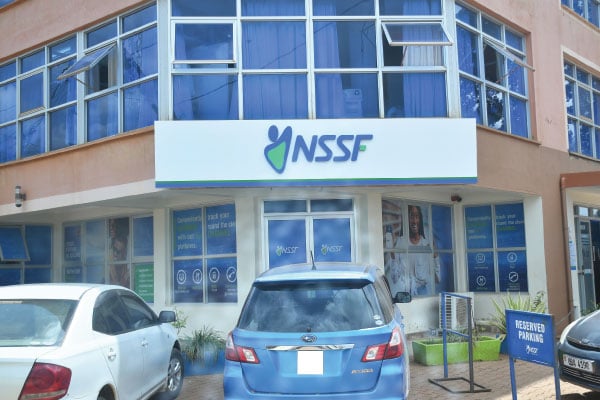Big banks face higher capital requirements

Uganda Shilling notes in the Bank of Uganda museum. Each bank needs to ensure that it has enough capital to support its balance sheet size. Photo by Rachel Mabala
What you need to know:
Big banks in Uganda have steeper capital requirements than small banks to reduce their probability of failure as Mark Keith Muhumuza writes.
For the last one month, the Stanbic Bank share price has been volatile as shareholders continued to show their disappointment at a lower dividend. This was after the bank posted a Shs150.8b after tax profit at the end of 2015. This was a rise of 15.7 per cent from Shs135b in 2014. The board, in turn, recommended a dividend payment of Shs0.78 per share, down from Shs1.66 per share in the previous year. For almost two hours – perhaps one of the longest Stanbic Bank Annual General Meetings – the board and management were constantly asked by shareholders to explain why the dividend was less in a year of higher net profit.
“During the course of 2015, we were identified as a Domestic Systemically Important Bank (DSIB) alongside two others in the banking sector. This is not unique to Uganda and it is a requirement borne out of the global financial crisis to ensure that systemically important banks seek capital buffers and do not require government bailouts,” says Mr Patrick Mweheire, the Stanbic Bank Uganda managing director.
In 2009, Uganda became part of the Basel III framework where countries are expected to build a banking sector that is resilient to sustain shocks that affected the global banking system during the 2008 financial crisis. Bank of Uganda (BoU) has been implementing this and that is why banks are required to hold a minimum Shs25b in the capital but on top of that, the bigger banks are now required to hold more.
“In our situation, we anticipate an upward revision of capital requirements by 2.5 per cent as a capital conservation buffer and an additional capital surcharge of 1 per cent - 3.5 per cent for being DSIB. It’s for this reason that we are paying out 30 per cent of our earnings in 2015 to preserve capital and prepare for these regulatory changes in 2016,” Mr Mweheire added.
New requirement
Large banks became part of this requirement in January 2015 when the implementation process started. In its 2013 Financial Stability Report, BoU noted that it was important to identify DSIB’s because it reduces the probability of failure, reduces the extent of the impact of failure and improves resolution.
According to Ms Christine Alupo, BoU’s director of communications, Stanbic Bank, Standard Chartered Bank and Crane Bank are the three identified DSIB’s in the country. The three as at the end of 2015, controlled about 38 per cent of all banking assets in the country. Because of their size, in the instance that they collapse, the impact on the economy would be big and could send ripple effects to the rest of the banking sector.
“Capital is a buffer that helps manage the risk of a big bank failing. Since the failure of a DSIB would be more destabilising than none - DSIB, they will be subjected to additional capital targets compared to none-DSIBs so that they are better able to withstand any shocks. The goal is to reduce their probability of failure, since they would be close to impossible to replace or for another institution to take on all their activities in case there is a need to resolve a DSIB,” Ms Alupo explains.
Bank of Uganda review
On an annual basis, BoU reviews the “big banks” based on four parameters. Size is one of those and the three identified banks are in the top four of the country. The complexity of transactions, the substitutability of their transactions and how linked the DSIB’s are linked to other banks. Already, these banks have capital buffers above the required minimum. The size and impact of these banks are visible in the profitability of the sector at the end of 2015. Net profit for the entire banking sector declined by 9.8 per cent to Shs486b from Shs539b in 2014. The decline is largely attributed to a loss by Crane Bank and after tax profit decline by Standard Chartered Bank.
“The capital surcharge for DSIBs will be implemented through an extension of the capital conservation buffer. Thus, all banks subject to a DSIB surcharge will have an additional capital requirement of 1-3.5 per cent of risk-weighted assets added to the minimum capital ratios,” Ms Alupo points out.
Since the three banks have a pool of retained earnings and have been profitable in the last 10 years, they don’t need additional funding from their shareholders to implement the additional requirement. So for the Stanbic board, paying a total of Shs40b as dividends down from Shs84.6b in 2014, it is to reserve the rest for additional capital buffers. The shareholders insist that the bank could have still paid them a higher dividend and still have enough capital buffers.
Mr Kelvin Musana, the chief finance officer at Standard Chartered Bank admits that additional requirements for larger banks are necessary.
“In as much as the bank is above the minimum requirement, each bank needs to ensure that it has enough capital to support its balance sheet size and more importantly, the amount of risk it takes on. Note that the current minimum capital requirement is 12 per cent of Risk Weighted Assets,” he says.
Risk Weighted Assets is where instead of the regulator having a static requirement for capital “buffers,” it bases the risk factor on the assets. The collapse of banks often affects depositors who could end-up losing their money. With better cash buffers, the risk to customers is reduced.
“They will have comfort knowing that the bank is resilient to external shocks that might affect it. So their funds are well protected,” Musana points out.
The last time a bank was closed for breaching the capital requirement target was in July 2014. At the time, BoU revoked the license of Global Trust Bank (GTB) because of failure to meet capital requirements and accumulated losses of Shs60b.
The banking measure
“Basel III” is a comprehensive set of reform measures, developed by the Basel Committee on Banking Supervision, to strengthen the regulation, supervision and risk management of the banking sector. These measures aim to: improve the banking sector’s ability to absorb shocks arising from financial and economic stress, whatever the source, improve risk management and governance strengthens banks’ transparency and disclosures – According to the Bank for International Settlements (BIS) in Basel, Switzerland. BoU is a member of the BIS – BIS says its aim is to “serve central banks in their pursuit of monetary and financial stability, to foster international cooperation in those areas and to act as a bank for central banks.”




